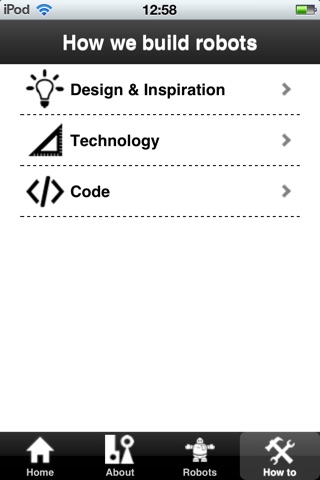
This app contains an easy to use complete reference to the results, software, technology, products, publications and design guidelines originating from the EU funded LIREC project. It also gives project partner contact details for companies and other interested parties to follow up on exploiting the project legacy.
LIREC, Living with Robots and Interactive Companions, was an four and a half year integrated research project exploring how we live with digital and interactive companions. Throughout the project we explored how to design digital and interactive companions who can develop and read emotions and act cross-platform. The project also brought together the world of dog ethology, social science, design & computer science to design future real world applications today.
LIREC The challenge: building long-term relationships with artificial companions
How do we create a new computer technology that supports long-term relationships between humans and synthetic companions? To date, artificial companions have had limited abilities to support long-term, meaningful social interactions with users in real social settings.
Whether embodied physically as a robot or as a virtual character on a screen, the LIREC network is developing methods that allow a companion to perceive, remember and react to human users, thus enabling a new generation of socially aware companions.
LIREC objectives: a focus on both robots and virtual companions
The LIREC network aims to create a new generation of interactive, emotionally intelligent companions that is capable of long-term relationships with humans. The research team focused on both virtual companions and physical embodiments such as robots. They also examined how people react to a familiar companion when it migrates from a robot body into a virtual form, for example on a mobile PDA screen.
LIREC A broad collaboration of skills
LIREC was a collaboration of 10 European partners specialised in psychology, ethology, human-computer interaction, human-robot interaction, robotics and graphical characters. The project has received funding from the European Communitys Seventh Framework Programme (FP7/2007-2013) under grant agreement number 215554 and completed in summer 2012.



